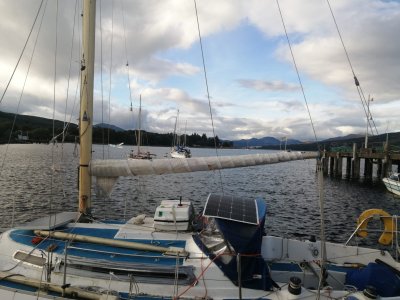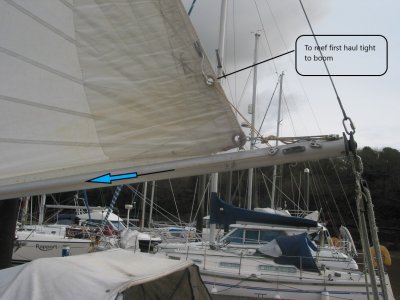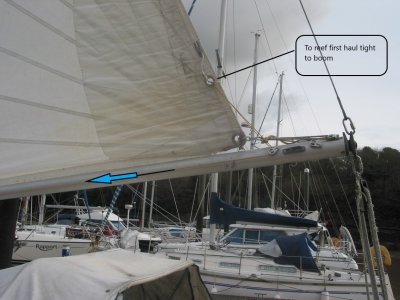DangerousPirate
Well-Known Member
In mast rolling systems are a totally different game than old style rolling boom ones.
I converted mine to slab reefing now and it's just so much better. I had really bad experience sailing in bit of a storm and trying to get the sail down and because I was thrown around and stuff constantly got got caught somewhere and the main was already lead to the cockpit through the sprayhood (previous owner did that, maybe were in the middle of converting, maybe just had two people) it was majorily annoying, it took me 20 minutes to take it down without losing control while drifting towards a big rock outside the harbour entrance (think it was near troon?).
Never again.
Here is the boat before the conversion, boom roller like this. Handle on the other side, main wrapped on the outside of the boom

I converted mine to slab reefing now and it's just so much better. I had really bad experience sailing in bit of a storm and trying to get the sail down and because I was thrown around and stuff constantly got got caught somewhere and the main was already lead to the cockpit through the sprayhood (previous owner did that, maybe were in the middle of converting, maybe just had two people) it was majorily annoying, it took me 20 minutes to take it down without losing control while drifting towards a big rock outside the harbour entrance (think it was near troon?).
Never again.
Here is the boat before the conversion, boom roller like this. Handle on the other side, main wrapped on the outside of the boom



